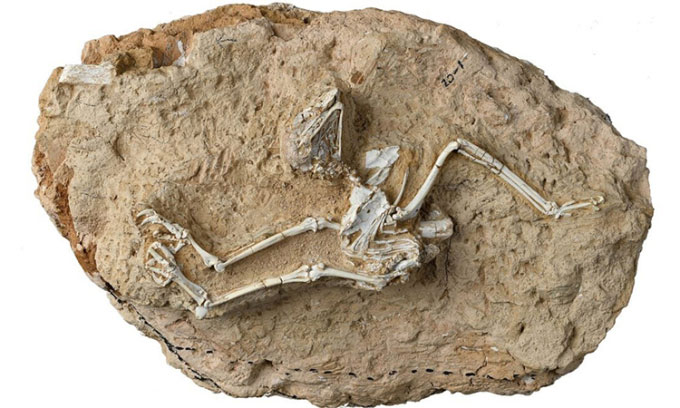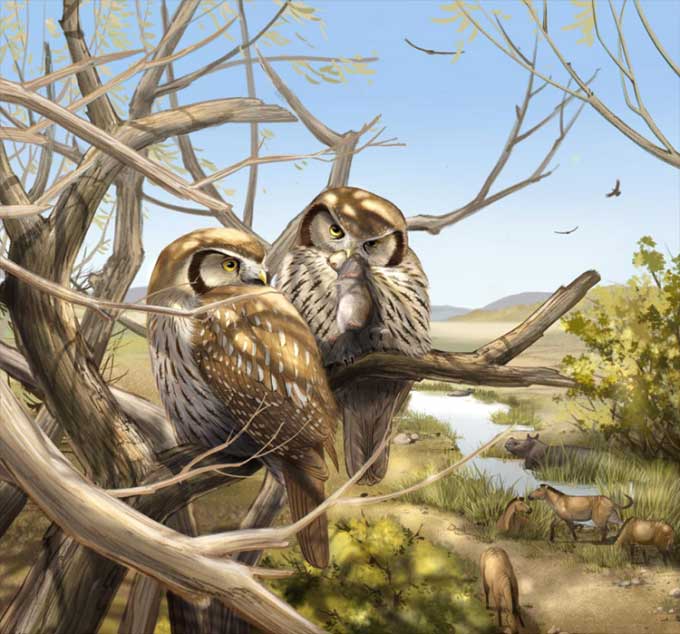The remarkably preserved skeleton found in northwest China reveals the first evidence of a prehistoric owl that was active during the daytime.

Nearly complete 6-million-year-old owl fossil in Gansu. (Photo: IVPP)
In a report published in the Proceedings of the National Academy of Sciences on March 28, a research team from the Institute of Vertebrate Paleontology and Paleoanthropology (IVPP) of the Chinese Academy of Sciences, led by Dr. Li Zhiheng and Thomas Stidham, named the new species Miosurnia diurna. Its fossil was discovered in sedimentary rock at an elevation of over 2,100 meters in the Linxia Basin of Gansu province, on the edge of the Tibetan Plateau.
Despite dating back to 6 million years ago, the delicate skeleton of this creature is astonishingly well-preserved. It is nearly complete from head to tail, including parts that are rarely preserved in bird fossils, such as wing tendons, leg muscles, tongue bones, and even remnants of its last meal.
“The well-preserved eye bones in the skull indicate that Miosurnia diurna was a diurnal owl, rather than a nocturnal one,” Zhiheng stated.

Simulation of Miosurnia diurna hunting during the day. (Photo: IVPP)
Nocturnal animals require large eyes and pupils to see in low light conditions, while diurnal species have smaller eyes and pupils.
The research team reconstructed the shape and size of the pupils and the ring around the iris of the fossil, then compared it with the eyes of 55 species of reptiles and over 360 species of birds, including many owl species, concluding that Miosurnia diurna was diurnal, most closely resembling its modern relative, the Northern Harrier.
Dr. Stidham further noted that Miosurnia diurna provides the first evidence of an evolutionary process spanning millions of years, in which an owl species “abandoned the night in search of enjoyment under the sunlight.”

















































